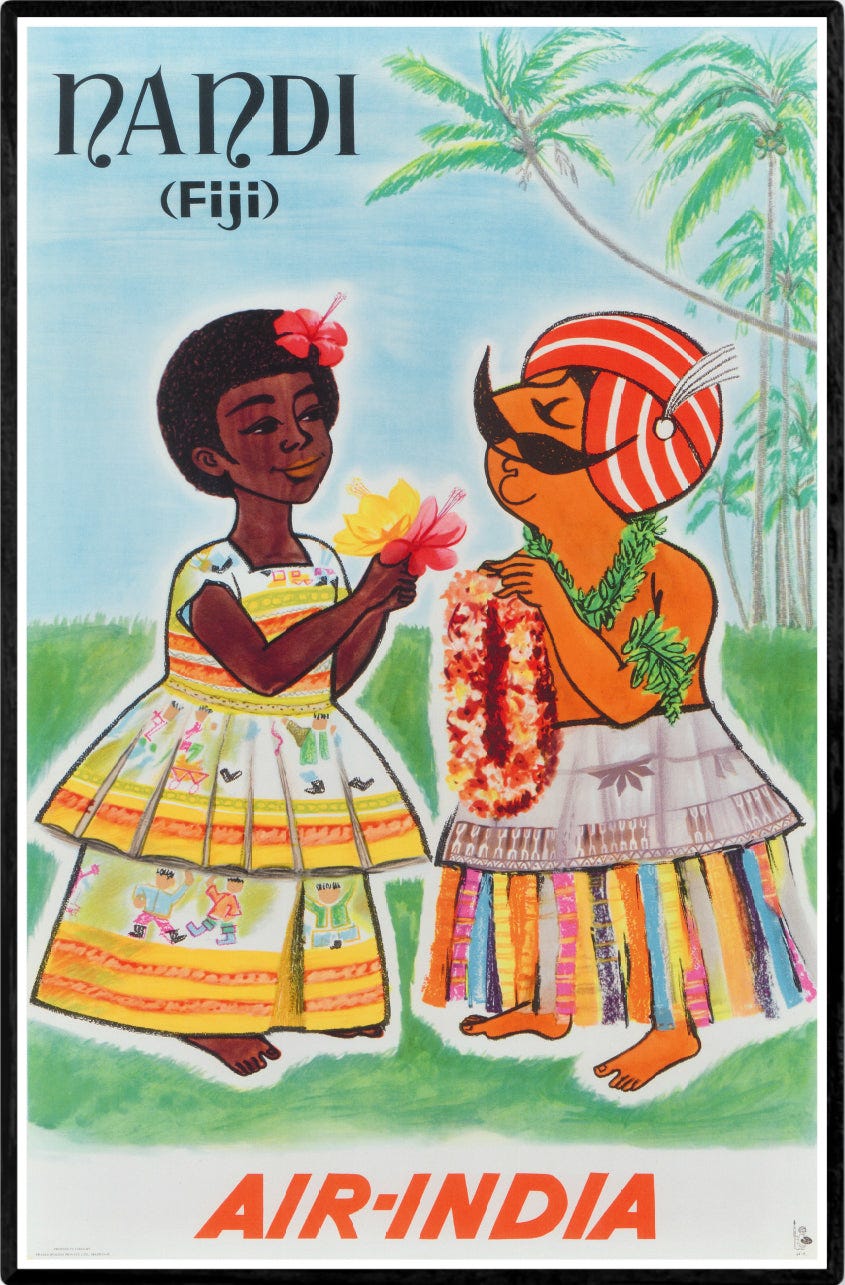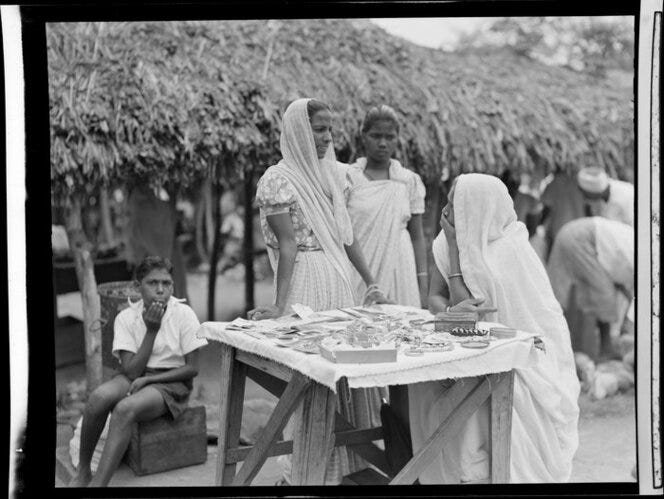Welcome to the Brown History Newsletter. If you’re enjoying this labor of love, please do consider becoming a paid subscriber. Your contribution would help pay the writers and illustrators and support this weekly publication. If you like to submit a writing piece, please send me a pitch by email at brownhistory1947@gmail.com.
Don’t forget to check out our SHOP and our Podcast.

Exploring "Fiji Baat": The Language of Indo-Fijians
Ek dum julum.
Konchi kartha?
Aaj pani barse.
These are all expressions I grew up hearing in my household. To me, this is Hindi. However, to most Hindi speakers from India, these words may sound completely foreign. That’s because our Hindi is from Fiji, a South Pacific island nation approximately 7,000 miles away from India.
Fiji Hindi, also known as ‘Fiji Baat,’ is a linguistic gem preserved over generations with roots in the Indian indentured laborer system. Though the language has a painful past, it is a testament to the tenacity of the Indian laborer who were brought to Fiji in the late 19th century. Today, Fiji Hindi’s evolution continues to be what unites the Indo-Fijian community across the world.
The origins of Fiji Hindi begin in 1879, when the first Indian indentured laborers were sent to the Fiji Islands. Notably, this migration followed the enactment of the British Slavery Abolition Act in 1834, which marked the official end of slavery within the British Empire. However, as history often reveals, the abolition of slavery led to the emergence of a new way of exploitation, which was the indentured labor system.
Approximately a total of 1.2 million laborers were bound by contractual agreements spanning many years. These laborers were sent to work in the sugarcane plantations of Fiji as well as distant lands such as Guyana, Mauritius, East Africa, Suriname, and beyond. The indenture system in Fiji, marked by its harsh conditions and exploitation, came to be known as "Girmit" (an adaptation of the English word, “agreement”), a term echoing the struggles and sacrifices endured during this period. Fijian Indian laborers, known as “Girmitiyas” faced brutal abuse, unfamiliar landscapes, and the upheaval of being far from their homelands.
In his book, Tears in Paradise – Suffering and Struggles of Indians in Fiji 1879-2004, Rajendra Prasad illustrates the horrific treatment of Girmitiyas in Fiji by the British. In fact, during the indenture period, Fiji had the highest rate of suicide and infanticide among the colonies that deployed indentured labor.
As excerpt from his book describes constant state of pain, anxiety, and torment shown upon the Girmitiyas:
“Physical assault and mental torment were used blatantly…the Girmitiyas were perceived to be workhorses. In the early days, virgin land was cleared and hand-plowed by them. Later, draught animals were introduced and, evidently, received better care and treatment than the Girmitiyas.”
Development of Fiji Hindi
During the migration, Indian laborers were brought from various regions of India, each speaking their distinct languages and dialects. Despite the hardship, the laborers quickly found a way to build community with one another, finding solace in shared hardships and daily interactions.




